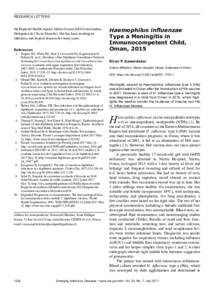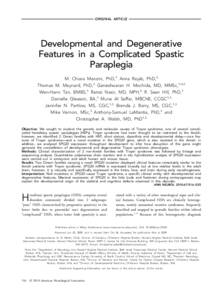Document
Epidemiology of meningitis in Oman—implications for future surveillance.
Identifier
DOI: 10.2991/j.jegh.2018.02.001
Source
Journal of Epidemiology and Global Health. v. 8, 3-4, p. 231-235
Contributors
Al-Abri, Seif., Author
Al-Mahrooqi, Salim., Author
Al-Jardaniyah, Amina., Author
Bawikar, Shyam., Author
Al-Rawahi, Bader., Author
Al-Abaidani, Idris., Author
Country
Netherlands.
Publisher
Atlantis Press International.
Gregorian
2018-01-01
Language
English
English abstract
Objectives: This study aimed to understand the epidemiology of meningitis cases admitted to hospitals in Oman and to identify any changing microbial patterns from the introduction of the new vaccines. Methods: A retrospective analysis of all cases of meningitis reported through a national surveillance system. Meningitis is a notifiable disease. Results: Of a total of 581 cases of meningitis from the period between January 1, 2005 and December 31, 2013, 15% (88) were confirmed to be bacterial in origin and 7.2% (42/581) viral. In 50.9% (296) of patients with suspected pyogenic meningitis, no specific bacterial pathogen were identified, and in 26% of cases (151) a cerebrospinal fluid study could not be undertaken. Among 88 cases with confirmed bacterial pathogens the organisms identified were Streptococcus pneumoniae (65.9%), Neisseria meningitides (18.2%), Haemophilus influenzae (6.8%), and other organisms (9.1%). The peak incidence was in children 2 years of age (39.4%). It showed notable decline in H. influenzae cases as well as pneumococcal meningitis cases, possibly indicative of the successful immunization program. Conclusion: A drop in H. Influenzae and pneumococcal meningitis cases was possibly the effect of the introduction of vaccines. It shows the need for improving diagnostic accuracy, laboratory capacities, and quality of surveillance reporting.
ISSN
2210-6006
Category
Journal articles


